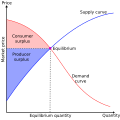Template talk:Inflation
| Template:Inflation is permanently protected from editing because it is a heavily used or highly visible template. Substantial changes should first be proposed and discussed here on this page. If the proposal is uncontroversial or has been discussed and is supported by consensus, editors may use {{edit template-protected}} to notify an administrator or template editor to make the requested edit. Usually, any contributor may edit the template's documentation to add usage notes or categories.
Any contributor may edit the template's sandbox. Functionality of the template can be checked using test cases. |
| This is the talk page for discussing improvements to the Inflation template. |
|
| Archives: 1, 2, 3Auto-archiving period: 6 months |
| This template does not require a rating on Wikipedia's content assessment scale. It is of interest to the following WikiProjects: | |||||||||||||||
| |||||||||||||||
|
|||
|
This page has archives. Sections older than 180 days may be automatically archived by Lowercase sigmabot III when more than 4 sections are present. |
This edit request to Template:Inflation/year has been answered. Set the |answered= parameter to no to reactivate your request. |
Change | CN = 2019 to | CN = 2023.
Zoozaz1 (talk) 03:02, 30 December 2024 (UTC)
Can somebody explain to me how the "r" (rounding) parameter works? I understand the concept of significant digits, but what r does seems only vaguely related to that, and expressed in a way I find inscrutable. I've never used anything other than negative values, and usually end up doing trial-and-error until I find a value that does what I want. I tried looking at the template source code, and ran away screaming in horror. RoySmith (talk) 13:29, 4 February 2025 (UTC)
- It's not about significant digits exactly. It's about where the rounding happens, either at (r=0), after (r=2, for example), or before (r=-3) the decimal point. To get hundredths of a dollar or other currency, use r=2 (i.e. 2 digits to the right of the decimal point). To get the number rounded to the nearest thousand, use r=-3 (i.e. 3 digits to the left of the decimal point). That's what the documentation appears to say, anyway. If you have examples that don't match that explanation, please provide them here. – Jonesey95 (talk) 01:13, 6 February 2025 (UTC)
- @Jonesey95 The main issue that I can see is that the template cuts off final zeroes, even if
r=is specified, so you end up with silly things like{{Inflation|index=US-GDP|value=1|start_year=2005|r=2}}giving 1.5, not 1.50. This really does need fixing, in my opinion. Theknightwho (talk) Theknightwho (talk) 20:07, 14 February 2025 (UTC)- I agree that seems like a bug. – Jonesey95 (talk) 21:17, 14 February 2025 (UTC)
- @Jonesey95 The main issue that I can see is that the template cuts off final zeroes, even if
It is easier to understand with an example:
- {{formatnum:{{Inflation|US|2923706.026|2009|r=3}}}} —> 4,285,109.08 (3 decimal places)
- {{formatnum:{{Inflation|US|2923706.026|2009|r=2}}}} —> 4,285,109.08 (2 decimal places)
- {{formatnum:{{Inflation|US|2923706.026|2009|r=1}}}} —> 4,285,109.1 (automatic rounding removes the 0)
- {{formatnum:{{Inflation|US|2923706.026|2009|r=0}}}} —> 4,285,109 (whole number)
- {{formatnum:{{Inflation|US|2923706.026|2009|r=-1}}}} —> 4,285,110 (-1 decimal place)
- {{formatnum:{{Inflation|US|2923706.026|2009|r=-2}}}} —> 4,285,100 (-2 decimal place)
- {{formatnum:{{Inflation|US|2923706.026|2009|r=-3}}}} —> 4,285,000 (-3 decimal place)
Betty Logan (talk) 20:33, 6 February 2025 (UTC)
This edit request has been answered. Set the |answered= parameter to no to reactivate your request. |
Description of suggested change: Per https://www.minneapolisfed.org/about-us/monetary-policy/inflation-calculator/consumer-price-index-1800-, the 2024 data can be added as 944.9 for Inflation/US/dataset. Kline • talk • contribs 19:21, 8 February 2025 (UTC)
This edit request has been answered. Set the |answered= parameter to no to reactivate your request. |
Description of suggested change: please update the NZ year in {{Inflation/year}} and the citation year in {{Inflation/fn}} from 2021 to 2024, see update to Template:Inflation/NZ/dataset.
Diff:
| − | NZ = | + | NZ = 2024 |
Jon (talk) 03:30, 25 February 2025 (UTC)
Some weird stuff's happening on Template:ShipCost/doc and Template:AircraftCost/doc due to this template.
{{ShipCost|FRA|3600000|year=1795}} Works fine.
{{ShipCost|FRA|3600000|year=1796}} hell breaks loose. Claiming NaN and reports a misnested strong error.
{{AircraftCost|FRA|3600000|year=1795}} Works fine.
{{AircraftCost|FRA|3600000|year=1796}} Broken, claiming NaN and reports a misnested strong error.
If someone knows what's going on here and can correct the issue, would you? Thanks! Zinnober9 (talk) 23:09, 1 March 2025 (UTC)
I've just noticed that {{Inflation}} Will ignore any commas
. Why? Isn't it possible to have the input/output figures consistent with each other?
My example:
{{Inflation|UK|12000|1385|cursign=£|fmt=eq|orig=yes}}
results in:
£12000 (equivalent to £12,378,344 in 2023) (i.e., £12000, no comma, £12 million, commas.)
Cheers, —Fortuna, imperatrix 10:22, 13 June 2025 (UTC)
- The above example is confusing because it has no comma in the input but we worked it out at Wikipedia:Help desk#Template:Inflation (comma (in)consistency). Commas are only ignored when the value is used in calculations, not when the original value is displayed with
|orig=yes, so "Will ignore any commas" in the documentation seems a little misleading. It turned out the poster had an unrelated issue: An empty|r=causes an error.{{Inflation|KRW|100|2000|r=}}produces: - Error when using {{Inflation}}: NaN/calculation error please notify Template talk:Inflation.
- Templates are usually coded to produce the same with an empty and an omitted parameter. It's done with the simple
{{{r|}}}if there is no default but it gets messier with a default. If the call has an empty|r=then{{{r|0}}}will produce the empty string and not 0. I suggest this workaround to replace the two{{{r|0}}}:{{#if:{{{r|}}}|{{{r}}}|0}}. It says: If r is both set and non-empty then use r, otherwise use 0. PrimeHunter (talk) 13:51, 13 June 2025 (UTC)- Thanks PrimeHunter, apologies for posting twice. I realised after posting here that it didn't seem to get much footfall so went to yon desk instead. I meant to delete this one. —Fortuna, imperatrix 09:23, 14 June 2025 (UTC)
Just an FYI: see Wikipedia:AutoWikiBrowser/Tasks § Articles using Template:Inflation with CURRENTYEAR. Graham87 (talk) 07:27, 15 June 2025 (UTC)


